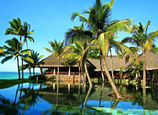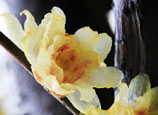
Eighty years ago when famous architect Laszlo Hudec (1893-1958) lived with his family on Panyu Road, he hosted Chinese and foreign VIPs and threw fashionable garden parties.
From 1918 when he arrived in Shanghai until 1947 when he left the city, Hudec was a powerful influence on architecture and created some of the city's most memorable buildings.
His work ranged over time from the eclectic Neoclassicism popular in the early 20th century to Art Deco and modern buildings. His works include the Park Hotel, the Grand Cinema, the American Club, a Catholic church, residences and many public and private buildings.
In commemoration of the 120th anniversary of his birth, the Hudec Memorial Hall is to open in his old residence at 129 Panyu Road. Displays cover not only his works, but also the life of a remarkable man who escaped from a Russian prisoner of war camp in Siberia and came to China.
Exhibits include replicas of the family bible, college transcript from the Royal Joseph Technical University in Budapest, photos of Hudec as a soldier and prisoner of war, watercolors painted by Hudec and other items.
Hudec was born in Austria-Hungary in what is now the Slovak Republic. He was influenced by his architect father, studied architecture in college, joined the army in World War I, was captured by the Russians and imprisoned for two years in Siberia.
He eventually made his way to Shanghai where he joined the American architectural firm R.A. Curry. He designed more than 60 buildings that dominated the city's skyline at the time, in different architectural styles from Neoclassicism to Art Deco.
In 1930 Hudec designed his own three-story Tudor-style residence on Panyu Road, which is now the memorial hall. The family lived there until 1938 when they moved to an apartment at Hubertus Court.
"Hudec's buildings might have been surpassed in height and size but their historic significance remains: He is considered to be the pioneer of modernism in China," says Gergely Pr hle, Hungary's deputy state secretary of the Ministry of Foreign Affairs, told a commemoration ceremony on January 8.
Hudec's daughter, Alessa de Wet, has fond memories of old Shanghai.
"I remember the large garden parties my parents hosted for the Austro-Hungarian community every summer. It was an open house with people coming and going all day long, some playing crochet, others a Hungarian card game, and many just socializing or discussing the latest news," she recalls. "One year one guest came as a rabbi, another year he came as a Buddhist monk and later as a Catholic abbot."
The family kept pigeons and Hudec loved to seem them circle as he filled their feeder before he left for the office, de Wet says. The yard had swings, a sandbox and wooden fort.
The house had fallen into disrepair but has been restored; de Wet calls the changes "wonderful."
Many of Hudec's works are gone, but quite a few remain and a third of them are protected as heritage sites that are frequently visited.
 |
















 Extinction of river dolphin: What does it mean for the Yangtze River?
Extinction of river dolphin: What does it mean for the Yangtze River?


![]()
